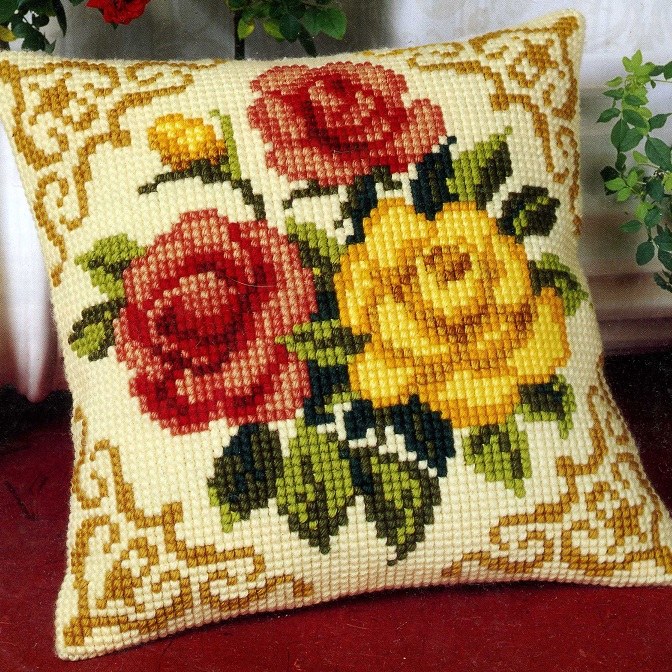Preparation embroidered products
Despite the fact that during embroidering craftswomen are taking all precautions, the work can be accidentally contaminated and should be washed. In addition, water procedure to mitigate the thread, the stitches will get extra volume, traces of Hoop smoothed, and the pattern will come alive. But before washing it is necessary to carefully examine the embroidery. If the reverse side is left long ends of threads, they need to be cut. Often craftswomen use the auxiliary remove the outline or make the layout simple seam – all these threads you need to gently pull.
Laundry cross stitch
The main trouble that may occur in the washing process of the embroidery, it is a loss of thread color. Most often it is exposed to blue and red hues. Leading manufacturers of embroidery thread and wool offer quality products and even indicate on the label the temperature conditions of processing water, but in any case you should play it safe and use for washing embroidery room-temperature water and gentle detergent. In addition, do not pour the powder directly into the product, it must first lather in the container, the amount of which is sufficient so that the canvas was folded several times.
Needlewoman with experience prefer to wash the embroidery manually, and as a detergent shampoos for normal hair. However, modern cars can be programmed on a delicate cycle (as, for example, for silk), and off spin. In this case, you can be confident that the setting of the stone on your favorite ring will not accidentally hook a cross on the canvas and will not pull it. If hand-washing is noticeable that the water turned a color, it is better to remove from her embroidery and thoroughly rinse to the rest of the shades have not changed its color. In any case, do not wring fabric, it will cause deformation of the material and the individual stitches, the picture may become distorted or "run".
How to dry and iron the embroidery
After the embroidery is slightly wet and gave to drain excess water and must be carefully spread out on a flat surface. Do not dry the fabric on the artificial source of heat – it can shrink, and uneven. When the embroidery is dry, it must be put face down on a soft cloth (a Terry towel is ideal) and iron is not too hot iron. If Ironing on a hard surface, crosses will be flat and the stitches will keep the volume and a convex shape.
